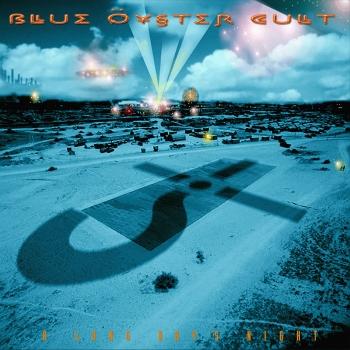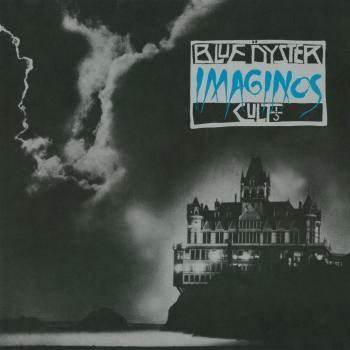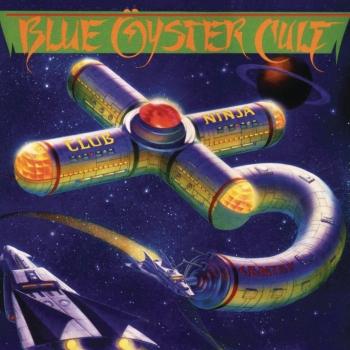
Secret Treaties (Remaster) Blue Oyster Cult
Album info
Album-Release:
1974
HRA-Release:
13.07.2016
Label: Sony / Columbia / Legacy
Genre: Rock
Subgenre: Hard Rock
Artist: Blue Oyster Cult
Composer: A. Bouchard, P. Smith, Sandy Pearlman, D. Roeser, R. Meltzer, J. Bouchard
Album including Album cover
I`m sorry!
Dear HIGHRESAUDIO Visitor,
due to territorial constraints and also different releases dates in each country you currently can`t purchase this album. We are updating our release dates twice a week. So, please feel free to check from time-to-time, if the album is available for your country.
We suggest, that you bookmark the album and use our Short List function.
Thank you for your understanding and patience.
Yours sincerely, HIGHRESAUDIO
- 1 Career of Evil 03:59
- 2 Subhuman 04:39
- 3 Dominance and Submission 05:23
- 4 ME 262 04:48
- 5 Cagey Cretins 03:16
- 6 Harvester of Eyes 04:23
- 7 Flaming Telepaths 05:20
- 8 Astronomy 06:28
Info for Secret Treaties (Remaster)
The band continued to churn out high quality material with their third album 'Secret Treaties'. The record featured one of their best moments ever in the two last tracks that floated into each other: 'Flaming Telepaths' and 'Astronomy'. This is melodic and classic '70s rock at its very best, loaded with grandiose and beautiful melodies with excellent use of Mellotron, piano and synths incorporated into the arrangements. Why 'Astronomy' hasn't got the same status as 'Stairway to Heaven' is beyond me. The rest of the album is of the heavier kind, and has one of Blue Öyster Cult's best riffs in 'Dominance and Submission'. 'Subhuman' tries to be laidback and hard rocking at the same time, and succeeds very well in doing that. 'ME 262' combines a driving boogie groove with an interesting riff that is the real hook of the track. 'Cagey Cretins' is fast and aggressive, and probably the track on the album that reminds most of the previous album. 'Harvester of Eyes' combines an almost 60's-like pop melody in the chorus with a typical and irresistible '70s hard rock riff before going into a dark and sinister finale. And it's impossible to not mention the opener 'Career of Evil' that very well showcases the band's ability to make catchy hard rock. 'Secret Treaties' is for me probably the best of Blue Öyster Cult's three first albums.
„While the speed-freak adrenaline heaviness and shrouded occult mystery of Tyranny and Mutation is the watermark for Blue Öyster Cult's creative invention, it is Secret Treaties that is widely and critically regarded as the band's classic. Issued in 1974, Secret Treaties is the purest distillation of all of BÖC's strengths. Here the songs are expansive, and lush in their textures. The flamboyance is all here, and so are the overdriven guitar riffs provided by Buck Dharma and Eric Bloom. But there is something else, texturally, that moves these songs out from the blackness and into the shadows. Perhaps it's the bottom-heavy mix by producer and lyricist Sandy Pearlman, with Allen Lanier's electric piano and Joe Bouchard's bass coming to rest in an uneasy balance with the twin-guitar attack. Perhaps it's in the tautness of songwriting and instrumental architectures created by drummer Albert Bouchard, Bloom, and Don Roeser (Buck Dharma). Whatever it is, it offers the Cult a new depth and breadth. While elements of psychedelia have always been a part of the band's sound, it was always enfolded in proto-metal heaviness and biker boogie. Here, BÖC created their own brand of heavy psychedelic noir to diversify their considerably aggressive attack. Listen to 'Subhuman' or 'Dominance and Submission.' Their minor chord flourishes and multi-tracked layered guitars and Bouchard's constantly shimmering cymbals and snare work (he is the most underrated drummer in rock history) and elliptical lyrics -- that Pearlman put out in front of the mix for a change -- added to the fathomless dread and mystery at the heart of the music. Elsewhere, on 'Cagey Cretins' and 'Harvester of Eyes' (both with lyrics by critic Richard Meltzer), the razor-wire guitar riffs were underscored by Lanier's organ, and their sci-fi urgency heightened by vocal harmonies. But it is on 'Flaming Telepaths,' with its single-chord hypnotic piano line that brings the lyric 'Well, I've opened up my veins too many times/And the poison's in my heart in my heart and in my mind/Poison's in my bloodstream/Poison's in my pride/I'm after rebellion/I'll settle for lives/Is it any wonder that my mind is on fire?' down into the maelstrom and wreaks havoc on the listener. It's a stunner, full of crossing guitar lines and an insistent, demanding rhythmic throb. The set closes with the quark strangeness of 'Astronomy,' full of melancholy, dread, and loss that leaves the listener unsettled and in an entirely new terrain, having traveled a long way from the boasting rockery of 'Career of Evil' that began the journey. It's a breathless rock monolith that is all dark delight and sinister pleasure. While the Cult went on to well-deserved commercial success with Agents of Fortune an album later, the freaky inspiration that was offered on their debut, and brought to shine like a black jewel on Tyranny and Mutation, was fully articulated as visionary on Secret Treaties.“ (Thom Jurek, AMG)
Ranked #47 in Rolling Stone's '50 Coolest Records“, „…Deviant stun-guitar metal anthems with ridiculous demonic lyrics...' (Rolling Stone)
Eric Bloom, stun guitar, keyboards, vocals
Donald 'Buck Dharma' Roeser, guitar
Allen Lanier, keyboards, synthesizers, lead & rhythm guitar
Joe Bouchard, bass, vocals
Albert Bouchard, drums, vocals
Recorded 1974 at CBS Studios, New York City
Engineered by Tim Geelan, Jerry Smith
Produced by Murray Krugman, Sandy Pearlman
Digitally remastered
Blue Öyster Cult
Spanning three decades, Blue Öyster Cult has a long and storied history. The band got its start in the late ’60s on Long Island, New York, as the Soft White Underbelly, but each member had been involved in bands previously in high school and college, before ending up in the “right place at the right time” to create the beginnings of Blue Öyster Cult.
The threads that eventually wove together to create Blue Öyster Cult got their start in upstate New York.
Long Island native Donald Roeser and Albert Bouchard (of Watertown, New York) met at Clarkson College, in Potsdam, NY. The two were introduced by a mutual friend, Bruce Abbott (who later co-authored “Golden Age of Leather” with Donald). With Abbott and two other friends, they formed “The Disciples” and played college parties and local beer halls. The next year, the band reformed and played the same circuits as “Travesty” (named after the Blues Project album). Through all this, their studies fell by the wayside, and both Albert and Donald decided to quit college to concentrate on playing music full-time.
Eventually “Travesty” broke up, Donald and Albert took seperate paths for a while. Donald went back to Long Island, and Albert took a musical opportunity in Chicago. After moving there, though, the band fizzled, and Albert returned to NY and joined Donald. In the meantime, Donald had been jamming with local musicians, and had met a person that would become very influential in their future: Sandy Pearlman.
Sandy Pearlman became interested in rock music around the time of the British Invasion, and was a pioneering voice of rock criticism, opening a new field for creative writers like Lester Bangs. Both Pearlman and his friend Richard Meltzer were contributors for seminal magazine “Crawdaddy!,” the first magazine that dedicated itself to analysis of rock music and its culture.
Allen Lanier came into the fold by way of guitarist John Wiesenthal. Allen had accepted employment at a film company at which Wiesenthal was also an employee. After becoming acquainted, Wiesenthal invited Allen out to Long Island to meet and jam with the loose group of musicians he played with, and Allen began to regularly jam with them.
An old house near Stony Brook College became ground zero for the formative band, and casual jams with whomever happened to be hanging around began to turn into rehearsals with a core band, which included Wiesenthal, Donald, Albert, Allen and Andrew Winters, a school friend of Donald. It was 1967.
Pearlman (along with Meltzer and Wiesenthal) had been a student at Stony Brook, and was becoming increasingly involved in the music scene. When he heard the formative combo, he instantly recognized the talent at work. He had an idea for a band, and thought that this group of musicians had the chops to put that idea into play. The musicians saw that Pearlman’s contacts and stature in the local (and increasingly national) scene could help them spawn a career as well, and an alliance was formed.
This album contains no booklet.






















